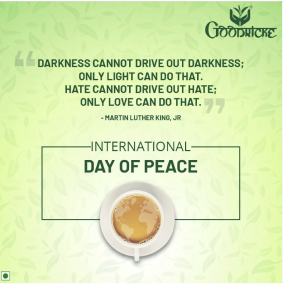Darjeeling teas, often referred to as the "champagne of teas," are celebrated worldwide for their exquisite taste and unparalleled quality. Nestled in the foothills of the majestic Himalayas, the Darjeeling district is home to some of India’s most iconic tea estates. These teas undergo minimal processing, preserving the natural essence and goodness of the freshly plucked leaves. Hand-rolling and sun-drying the leaves unlock their rich flavours and delicate aromas while ensuring the retention of essential vitamins and minerals, which contribute to their exceptional taste. The unique terroir of Darjeeling—its climate, altitude, and soil—imbues these teas with a distinct flavour profile that tea lovers cherish. Sourced from the revered Darjeeling tea gardens, every step is taken to preserve the tea's natural qualities, ensuring that its authentic flavours are maintained from garden to cup.
If you are a tea connoisseur eager to experience the finest Darjeeling tea, this guide will provide essential tips to help you select the best variety for your refined palate. Read on to discover how to elevate your tea experience with the best Darjeeling tea.
Your Guide to Selecting the Finest Darjeeling Tea
Darjeeling tea is known for its unique flavour profile, delicate aroma, and nuanced character. However, with so many options available, choosing the best one can feel overwhelming. The tips below will help you navigate the key factors when selecting the best Darjeeling tea for your palate:
- Quality of Tea Leaves
The quality of the tea leaves is the first indicator of a premium Darjeeling tea. The best Darjeeling teas feature long, tightly coiled leaves, often adorned with silvery or golden tips. These tips are a sign of high-quality plucking and processing.
The tea leaves should feel dry and crisp to the touch. Avoid teas with wet or musty-smelling leaves, as these may indicate improper storage or subpar quality.
Look for a vibrant, fresh aroma in the dry leaves, as this signals that the tea will deliver a rich flavour experience.
- Tea Flushes: Harvest Times & Flavours
The flavour and aroma of Darjeeling tea are closely tied to its harvest season, or "flush."
- First Flush (Spring): Harvested from March to May, these teas are light, floral, and delicate with a fresh, aromatic finish.
- Second Flush (Summer): Picked in June, second flush teas are richer, with signature muscatel notes, offering a full-bodied, fruity flavor.
- Monsoon & Autumn Flushes: Monsoon teas are robust and often used in blends, while autumn flush teas, harvested later, are mellow, earthy, and well-rounded, perfect for everyday drinking.
Each flush brings a unique taste profile, from subtle floral to bold and muscatel, catering to different tea preferences.
- Variety of Estates
Darjeeling tea is grown in over 80 tea estates across the region, each producing teas with distinct characteristics:
Notable estates include Castleton, Margaret’s Hope, Thurbo, and Badamtam, among others, all known for their exceptional quality.
To explore the wide range of flavours available, consider trying sample packs from different estates. These packs offer a curated selection from various flushes and regions, helping you discover your preferences before investing in larger quantities.
- Different Types of Darjeeling Tea
Darjeeling tea is not limited to just black tea. It comes in various types, each offering a unique experience:
Black Tea: The most common type, often enjoyed for its full-bodied flavour and deep muscatel notes.
Oolong Tea: Darjeeling oolongs are semi-oxidized, sitting between black and green tea, offering a more nuanced flavour with both floral and fruity undertones.
Green Tea: Light and refreshing, Darjeeling green teas are milder and have grassy, vegetal notes.
White Tea: Delicate and subtle, white Darjeeling teas are the least processed, with sweet and floral characteristics.
- Organic and Authentic Certification
For those prioritizing sustainability and purity, many Darjeeling estates offer organically grown teas. Opt for teas with organic certification to ensure they are free from pesticides and chemicals. Additionally, always look for the Darjeeling Tea Certification logo to guarantee that the tea is authentic and sourced directly from the Darjeeling region.
The Takeaway
When choosing the best Darjeeling tea, it's essential to consider the quality of the leaves, the seasonal flushes, and your preferred tea style. Exploring the rich variety of Darjeeling teas from different estates is a great way to find your favourite blend. One exceptional option is Goodricke’s exhaustive collection of premium Darjeeling teas. Goodricke is renowned for maintaining the highest standards in tea quality, flavour profile, aroma, and liquor. With tea estates where cultivation is both a craft and a passion, the Darjeeling tea from Goodricke’s Darjeeling tea gardens reflects a rich history and a legacy of excellence. For dedicated tea lovers, diving into Goodricke’s collection promises a rewarding experience, delivering the very essence of Darjeeling tea at its finest.












